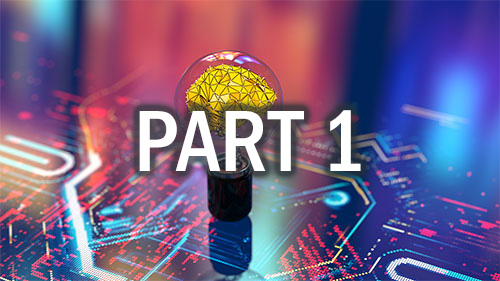As the names imply, machine learning and deep learning are types of smart software that can learn. Perhaps not the way a human does. But close enough.
What’s the difference between machine and deep learning? That’s the subject of this 2-part Tech Explainer. Here in Part 1, we’ll look in depth at machine learning. Then in Part 2, we’ll look more closely at deep learning.
Both, of course, are subsets of artificial intelligence (AI). To understand their differences, it helps to first understand something of the AI hierarchy.
At the very top is overarching AI technology. It powers both popular generative AI models such as ChatGPT and less famous but equally helpful systems such as the suggestion engine that tells you which show to watch next on Netflix.
Machine learning is a subset of AI. It can perform specific tasks without first needing explicit instructions.
As for deep learning, it’s actually a subset of machine learning. DL is powered by so-called neural networks, multiple node layers that form a system inspired by the structure of the human brain.
Machine learning for smarties
Machine learning is defined as the use and development of computer systems designed to learn and adapt without following explicit instructions.
Instead of requiring human input, ML systems use algorithms and statistical models to analyze and draw inferences from patterns they find in large data sets.
This form of AI is especially good at identifying patterns from structured data. Then it can analyze those patterns to make predictions, usually reliable.
For example, let’s say an organization wants to predict when a particular customer will unsubscribe from its service. The organization could use ML to make an educated guess based on previous data about customer churn.
The machinery of ML
Like all forms of AI, machine learning uses lots of compute and storage resources. Enterprise-scale ML models are powered by data centers packed to the gills with cutting-edge tech. The most vital of these components are GPUs and AI data-center accelerators.
GPUs, though initially designed to process graphics, have become the preferred tool for AI development. They offer high core counts—sometimes numbering in the thousands—as well as massive parallel processes. That makes them ideally suited to process a vast number of simple calculations simultaneously.
As AI gained acceptance, IT managers sought ever more powerful GPUs. The logical conclusion was the advent of new technologies like AMD’s Instinct MI200 Series accelerators. These purpose-built GPUs have been designed to power discoveries in mainstream servers and supercomputers, including some of the largest exascale systems in use today.
AMD’s forthcoming Instinct MI300X will go one step further, combining a GPU and AMD EPYC CPU in a single component. It’s set to ship later this year.
State-of-the-art CPUs are important for ML-optimized systems. The CPUs need as many cores as possible, running at high frequencies to keep the GPU busy. AMD’s EPYC 9004 Series processors excel at this.
In addition, the CPUs need to run other tasks and threads of the application. When looking at a full system, PCIe 5.0 connectivity and DDR4 memory are important, too.
The GPUs that power AI are often installed in integrated servers that have the capacity to house their constituent components, including processors, flash storage, networking tech and cooling systems.
One such monster server is the Supermicro AS -4125GS-TNRT. It brings together eight direct attached, double-width, full-length GPUs; up to 6TB of RAM; and two dozen 2.5-inch solid-state drives (SSDs). This server also supports the AMD Instinct MI210 accelerator.
ML vs. DL
The difference between machine learning and deep learning begins with their all-important training methods. ML is trained using four primary methods: supervised learning, unsupervised learning, semi-supervised learning, and reinforcement learning.
Deep learning, on the other hand, requires more complex training methods. These include convolutional neural networks, recurrent neural networks, generative adversarial networks and autoencoders.
When it comes to performing real-world tasks, ML and DL offer different core competencies. For instance, ML is the type of AI behind the most effective spam filters, like those used by Google and Yahoo. Its ability to adapt to varying conditions allows ML to generate new rules based on previous operations. This functionality helps it keep pace with highly motivated spammers and cybercriminals.
More complex inferencing tasks like medical imaging recognition are powered by deep learning. DL models can capture intricate relationships within medical images, even when those relationships are nonlinear or difficult to define. In other words, deep learning can quickly and accurately identify abnormalities not visible to the human eye.
Up next: a Deep Learning deep dive
In Part 2, we’ll explore more about deep learning. You’ll find out how data scientists develop new models, how various verticals leverage DL, and what the future holds for this emerging technology.
Do more:



